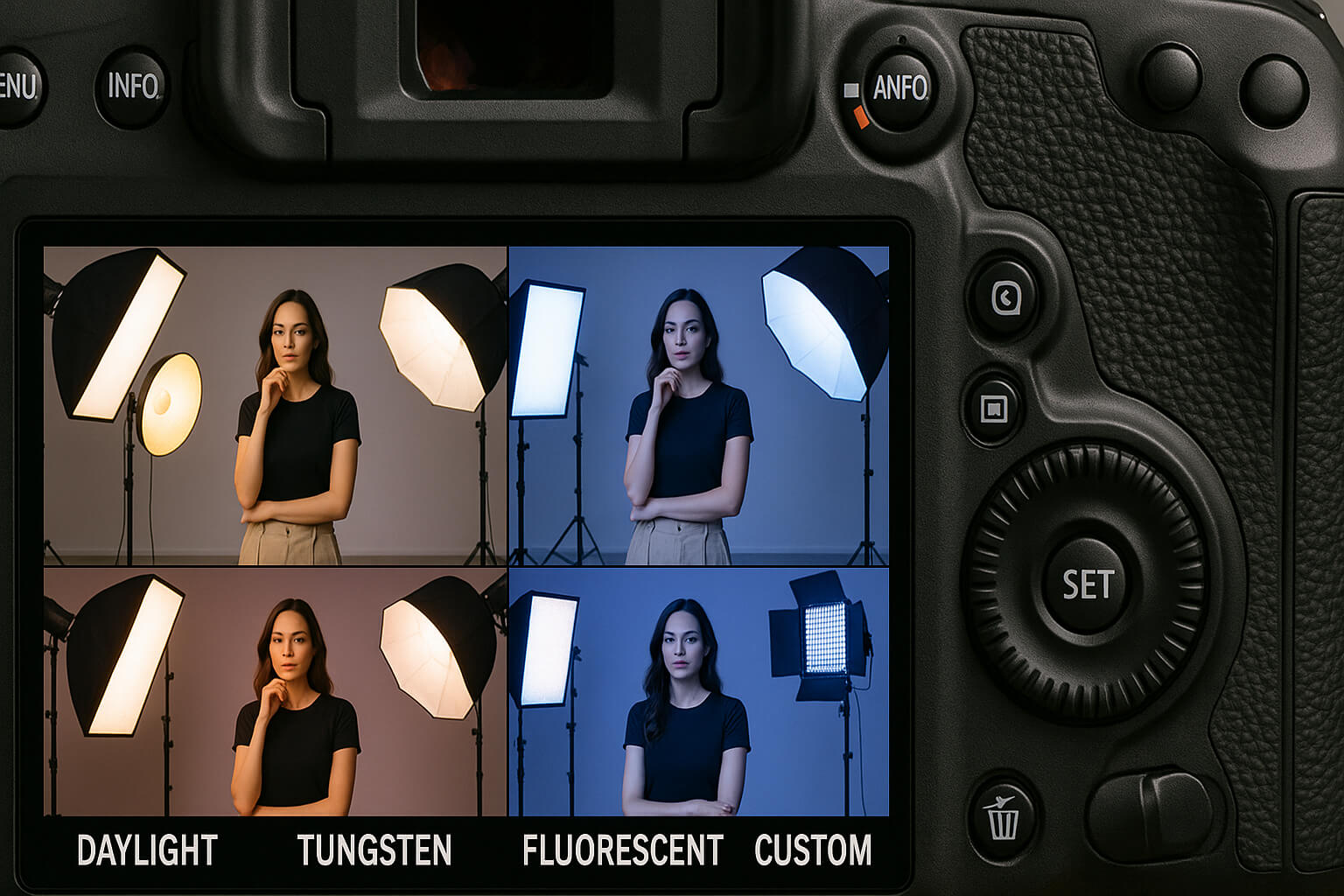June 12, 2025

White balance is a fundamental concept in photography that plays a crucial role in ensuring your images appear true-to-life and visually appealing. It’s often an overlooked setting, but when mastered, it can dramatically improve the quality of your photos. Understanding how to control white balance allows you to capture vibrant, accurate colors in any lighting situation. This guide breaks down everything you need to know about white balance, why it’s important, and how you can use it to take your photography to the next level.
White balance is the process of adjusting the color balance in your photos to ensure that colors appear natural, regardless of the light source. Different light sources have different color temperatures, which can cause color casts in your photos. The goal of white balance is to neutralize those color shifts so that white objects appear neutral and other colors remain true to life.
Light Sources and Color Temperature: Light is measured in terms of color temperature, usually in Kelvin (K). This measurement determines the warmth or coolness of a light source. The higher the Kelvin number, the cooler (bluer) the light will appear, and the lower the Kelvin number, the warmer (more yellow or orange) the light will look.
Warm Light (Lower Kelvin: 2000K–4000K): Warm light sources, such as candlelight, incandescent bulbs, or a sunset, have lower Kelvin values. These lights tend to create warm yellow or orange hues, which, if not corrected, can make your photos look overly yellow or orange.
Cool Light (Higher Kelvin: 5000K–10000K): Cool light sources, like daylight on an overcast day or the shade, tend to produce blue tones. Without proper white balance adjustments, these photos might look too blue, lacking the natural warmth.
White balance isn’t just a technical detail; it has a direct impact on how your photos look and feel. Here's why it’s crucial:
1. Accurate Skin Tones: White balance plays a key role in portrait photography. If your white balance is off, skin tones can look unnatural—too yellow, too blue, or too green. Correct white balance ensures that the skin tones of your subjects look natural, making your portraits appear more lifelike and professional.
This is especially vital in industries like fashion, weddings, and portrait photography, where precise skin tones are a top priority.
2. Consistent Colors: In product photography, food photography, or any other kind of commercial work, accurate colors are critical. Misjudging white balance can distort the colors of the product, which could mislead customers or clients. Consistent, true-to-life colors ensure your products look their best in any lighting.
3. Creative Control: White balance isn’t just about accuracy; it also offers a tool for creative expression. Photographers can manipulate the white balance to create specific moods or effects. For instance, a cooler white balance can give your image a cold, sterile look, while a warmer setting can create a nostalgic, golden-hour feel.
Learn more on capturing professional results: How to Take Professional Looking Photos
There are several ways to set white balance depending on the situation and the level of control you need. Here’s a breakdown of the most common methods:
Auto White Balance (AWB): Auto White Balance is the default setting on most cameras. Your camera automatically detects the lighting conditions and adjusts the white balance accordingly.
Preset Modes: Many cameras come with preset white balance modes for common lighting situations. These include:
Custom White Balance: This is the most accurate way to adjust your white balance for a specific scene. By using a neutral gray card or a white object, you can set the exact white balance for the lighting condition. This is perfect for studio work, product photography, and when working with controlled lighting setups.
Explore how light impacts color:
Kelvin Mode (Manual White Balance): For the ultimate control, many cameras offer a Kelvin mode. This allows you to manually set the color temperature of the light in your scene. By adjusting the Kelvin scale (typically between 2500K to 10000K), you can fine-tune the color balance to fit your creative vision.
Even if you don’t nail the white balance during shooting, don’t worry—editing software like Lightroom, Photoshop, or Capture One can help you adjust the white balance in post-production.
Tools:
Learn advanced editing techniques:
White balance isn’t just about accuracy; it’s a powerful creative tool. Here’s how you can intentionally use it to create dramatic effects:
1. Cooler Temperatures: By shifting the white balance towards a cooler temperature (increasing the Kelvin value), you can create a wintery, dramatic, or futuristic look. Cool tones tend to give a sleek, modern feel to images and are often used in fashion or editorial photography.
2. Warmer Temperatures: On the other hand, warmer white balance settings (lower Kelvin values) can give your photos a nostalgic, romantic, or cozy feel. Golden hour shots, in particular, benefit from the warm light that enhances skin tones and creates a dreamy atmosphere.
Learn about contrast & mood creation:
The light source in a scene will heavily influence the white balance. To master white balance, it’s essential to understand how different lighting setups interact with color temperature. Here are some helpful lighting techniques and guides:
By mastering white balance, you can elevate your photography, ensuring that your images are as true-to-life or creatively enhanced as you want them to be. Whether you're shooting in the studio, outdoors, or editing afterward, understanding how white balance works is a key step in becoming a more skilled photographer.
Stay up to date with the newest tips, gear reviews, and step-by-step guides to elevate your photography journey from home and beyond.